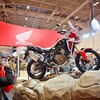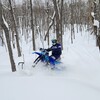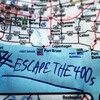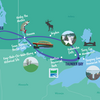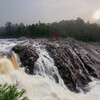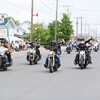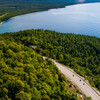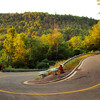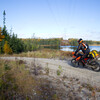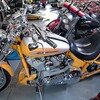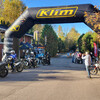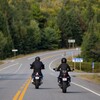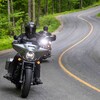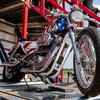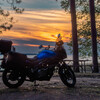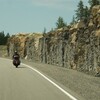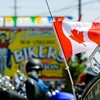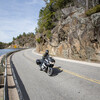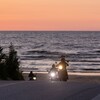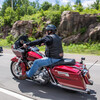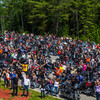
Motorcycle First Aid and Safety
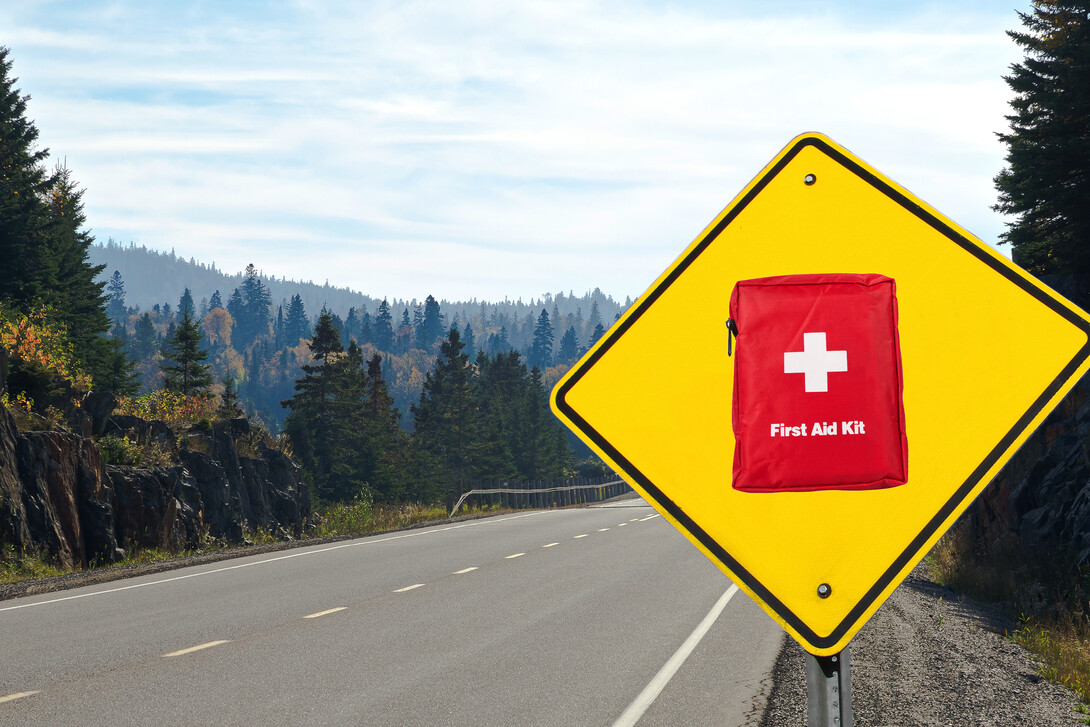
To research a potential article called "5 First Aid Tips Every Motorcyclist Should Know," I contacted Superior North Emergency Medical Services, which looks after the Paramedic Services for a large area in Northern Ontario near Thunder Bay. And, as it turned out, a handful of their paramedics are motorcyclists. I sent out an email to ask if they would help. Mark (not his real name) heeded the call.
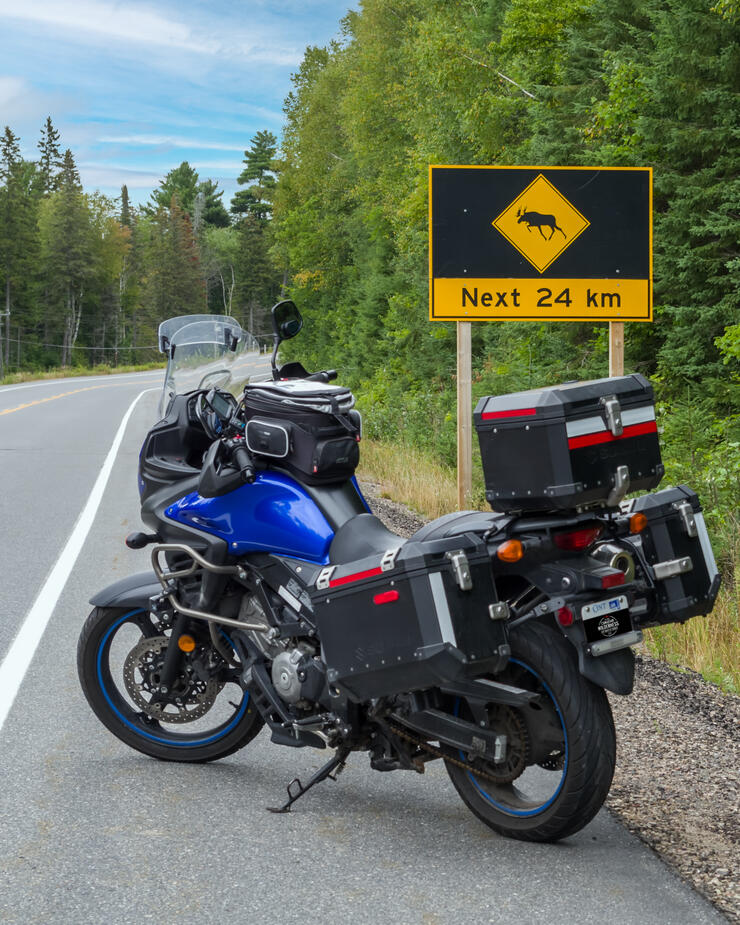
I asked questions like, “Should you remove the helmet from a crashed rider?” And, “In the event of serious bleeding, do you apply pressure or apply a tourniquet?” And, “In the event of a crash, should the rider be moved or left in situ?” For all three questions Mark answered, "It depends.”
Mark wasn't being flippant or evasive. He explained.
“Because there are so many variables, each crash is unique. The most suitable course of action for one crash doesn’t necessarily apply to the next, so there is no way I can give you definitive advice that will apply in all cases.”
If you have limited knowledge of first aid (i.e., you haven't taken a first aid course), he suggested you evaluate the situation, call 911, then use common sense until the experts arrive.
So, the plan for my article didn’t survive first contact. But Mark was far from the enemy. We hit it off right away and talked at length about our experiences riding in Northern Ontario. Mark's perspective was as a local and paramedic. Mine was as a touring motorcyclist and writer. This is what came out of the synergy of our discussions.
12 touring tips for Northern Ontario
1. Get certified in Standard First Aid
The course can be taken on a weekend and will give you the skills to optimize the outcome of anyone who crashes or has any accident or illness during your travels. You never know for whom or when you’ll need it. Just get it done.
2. Carry a first aid kit and instruction booklet
And, Mark stresses, the first time you look in your first aid kit should not be the first time you need it. Check it at least once a year to restock and replace expired products. In Northern Ontario, you may have a long wait before an ambulance arrives. Having a first aid kit could make a big difference.
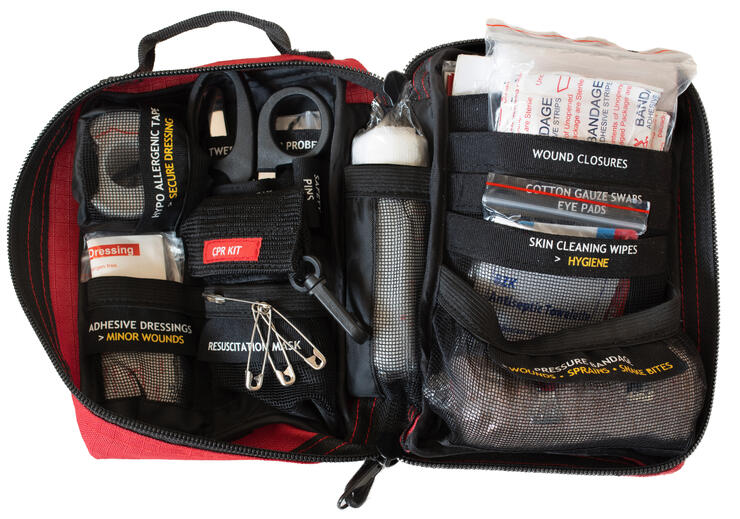
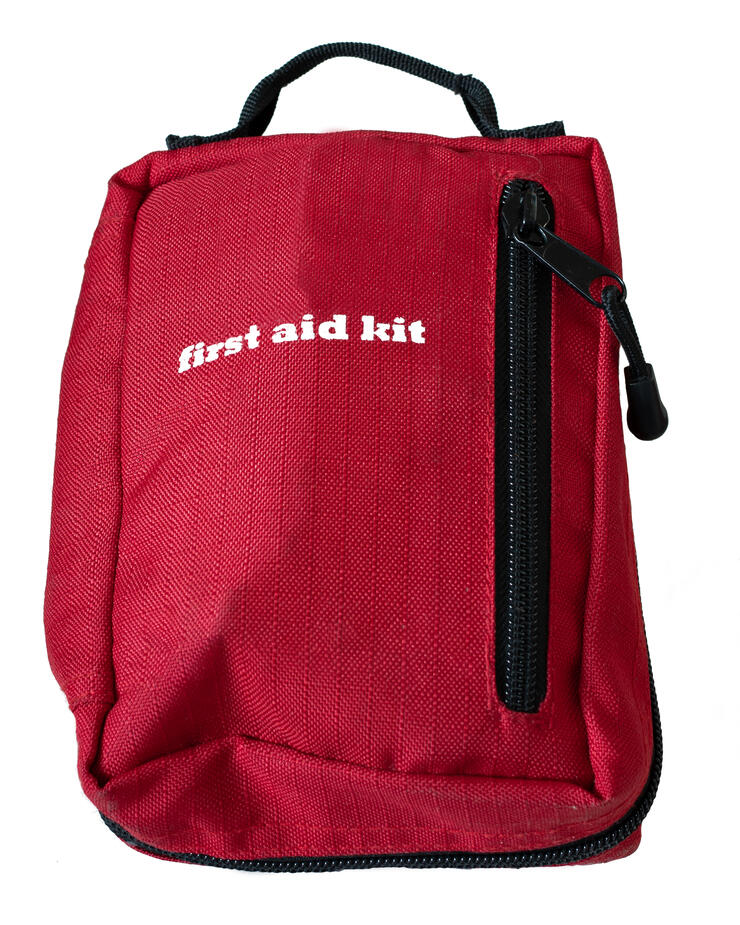
3. If your friend does crash, make safety at the crash scene your number one priority
Always scan the area to ensure that there are no hazards present (e.g., traffic, fire, risk of falling down an embankment, etc.) that might put you and the patient in more danger. It's easy to get so caught up in helping your friend that you forget where you are. Make sure you and the scene are safe before providing aid. If you become injured, you won’t be able to help your friend. Once the scene is safe, call 911 and keep them warm and comfortable until help arrives. (Keeping a space blanket in your first aid kit is a great idea.) Use your common sense to deal with any emergency issues like profuse bleeding.
4. If the rider is transferred to the hospital, send the helmet with them
A helmet involved in a collision can tell the doctors a lot about what happened and the injuries the rider may have sustained.
5. If riding alone, carry a personal locator beacon (e.g., Garmin InReach, ACR ResQLink, Spot X, etc.).
Even if you don’t stray far from the main highways, Northern Ontario has far less traffic than Southern Ontario. Many roads travel through rough and varied terrain. Missing a curve and going into the brush could make you invisible to passersby. Even if you’re in a group, having one PLB for the group makes sense because there are areas with poor or no cell service.
6. Dress for the Weather
Northern Ontario experiences colder average temperatures than southern Ontario. Weather can change radically and quickly. It can go from sun to rain to fog and warm to cold within a day. Always carry extra layers of clothing and a rain suit with you. During the day, the temperature can be comfortable for riding, but at night the temperature can approach freezing overnight, especially in May and September. Be prepared, especially if you're camping.
7. Know the symptoms of hypothermia
Hypothermia is a lowering of the body temperature. It doesn’t have to be below freezing for you to get hypothermia. It’s dangerous for riders because it can cause confusion, affect your motor skills, and make you drowsy. Any of these can lead to a crash. On cold and wet days, frequently stop to warm up. Be aware of the symptoms. Hypothermia may require medical attention, but if you stay alert, it shouldn’t get that far. If you do have to treat it, get the rider into a warm and dry environment. After their body temperature increases, keep them dry and wrap their body, including their head and neck, in a warm blanket. Warm drinks can help to increase body temperature but NO alcohol. And, if the person's temperature is below 95ºF or 35ºC, get immediate medical attention.
8. Beware heat exhaustion
Even in Northern Ontario, it can get hot. Be alert to heat exhaustion caused by excessive loss of water and salt. When riding on a scorching day, sweat is wicked away immediately. The loss of salt and dehydration this causes can lead to heat exhaustion which can cause cramping in your legs, drowsiness, headache, dizziness, and an elevated body temperature. Any of these can affect your ability to ride safely. Stop often to cool down. Stay hydrated. Many adventure bike riders use a water-bladder backpack (e.g., a Camelbak) to sip from as they ride. Wet vests and neck bandanas manufactured to cool the body on hot days are an excellent addition to your summer riding kit. Wet the vest or bandana and wear it until it dries. Then re-wet it and do it again until you no longer need it. But our favourite approach is to wear a swimsuit under our riding gear. Then, jump into one of Northern Ontario's many rivers or lakes. After all, what better way is there to cool off?
9. Watch for wildlife
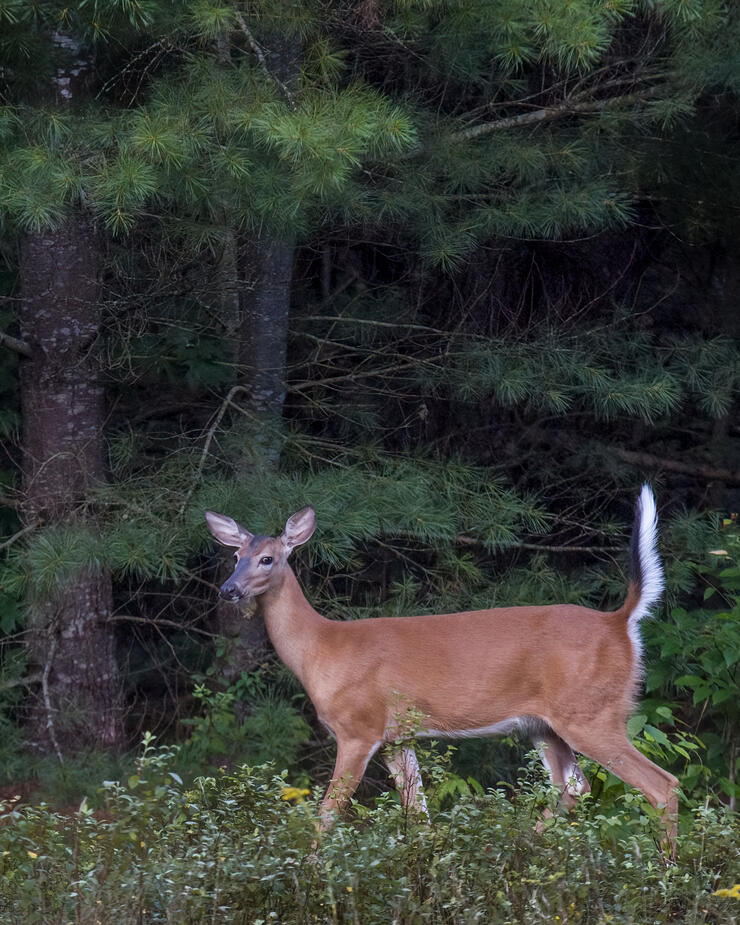
Northern Ontario is known for its wildlife. Unfortunately, people and wildlife don't always mix well. If you see a bear, or moose, or deer, don't approach it to take pictures. If you're camping, keep your campsite bear-safe. When you see beware-of-deer or -moose signs while you're riding, don’t ignore them. Slow down and scan the sides of the road. If you see a deer, remember they are seldom alone. You're not safe just because you've missed the first one. They can pop out like a deer version of Whac-A-Mol. Moose are huge. In a motorcycle-moose encounter, the moose will win. Tip: Don’t hit one. If there are a lot of bugs, animals will find a clearing where there's a breeze (e.g., a roadway) to get a break from them. Animals can be particularly active at dawn or dusk, so pay attention. Seeing our wildlife from afar and taking a picture with a telephoto lens can be a magic moment of your trip to Northern Ontario. Having an unfriendly encounter with one of our native beasts, well, not so much.
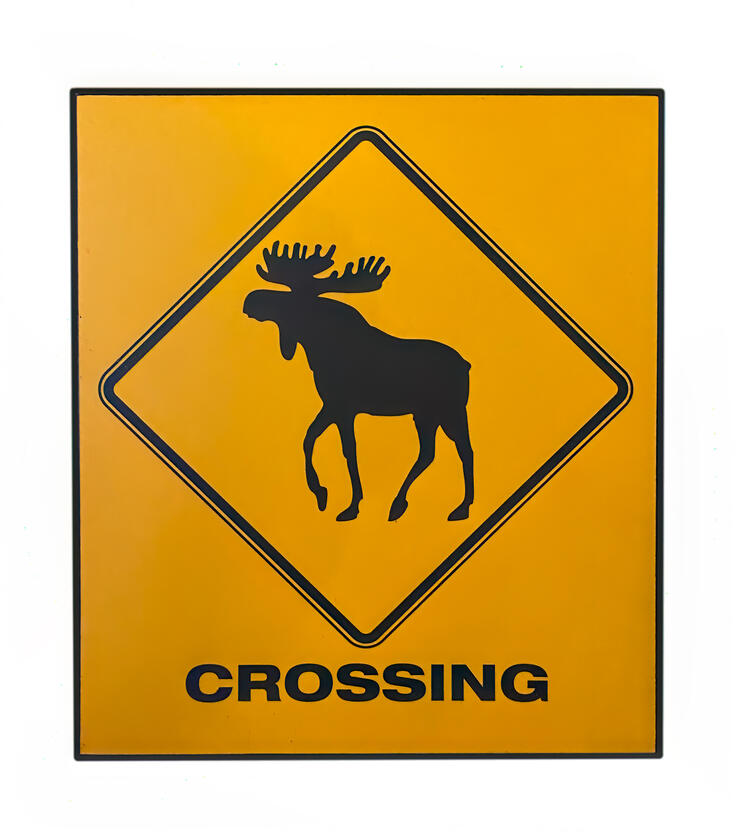
10. Bug off
Northern Ontario is all about the great outdoors, and with that comes bugs, especially in certain conditions and times of the year. Read Tips & Tricks to Beat the Bugs in Northern Ontario. Ben’s Deet bug spray has proven to work well.
11. Be mindful of distances
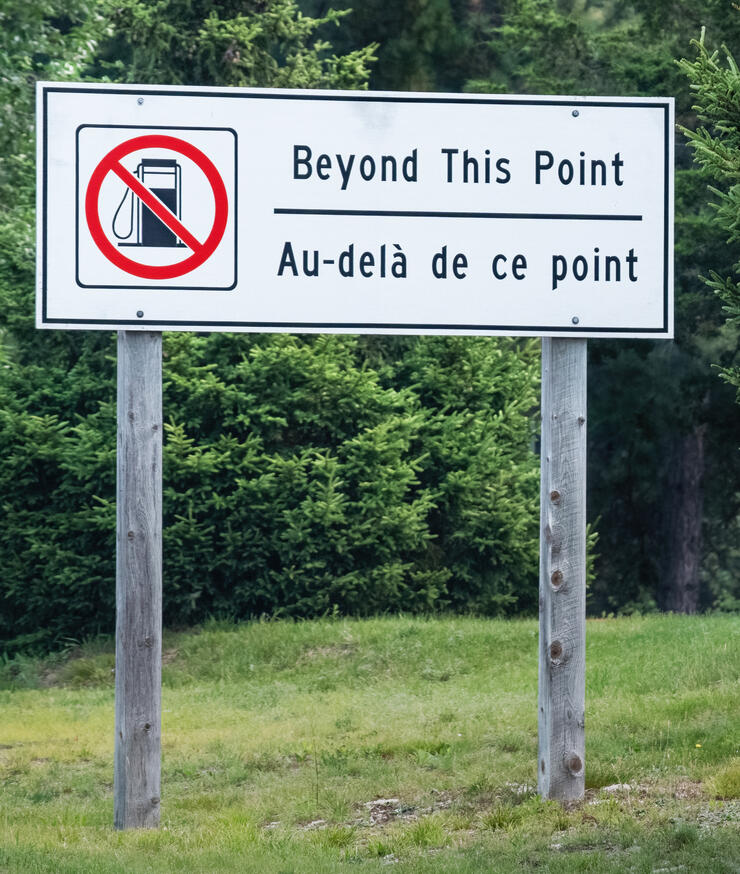
Unlike Southern Ontario, there can be considerable distances between food and fuel stops. Know how far your bike can go on a tank of gas. Fill up when you can, even if you'd usually wait longer in Southern Ontario. Finding out the hard way will put a damper on your trip.
12. Respect the roads (and logging trucks)
There's lots to explore if you get off the paved roads, although this is probably of more interest to dual sport and adventure bike riders. Get off the beaten track, and you'll run into logging trucks. They take a sense of ownership over these roads. After all, they live there, and driving them is their livelihood. They aren't necessarily friendly to an overly cautious motorcyclist new to riding gravel. They aren't unfriendly either, they have their job to do, and you might be in their way. If in doubt, let them go by. Enjoy the ride at your own pace. Also, you may come across debris that has fallen from the trucks (e.g., large branches). Proceed with caution.
Have fun and ride safe in Northern Ontario
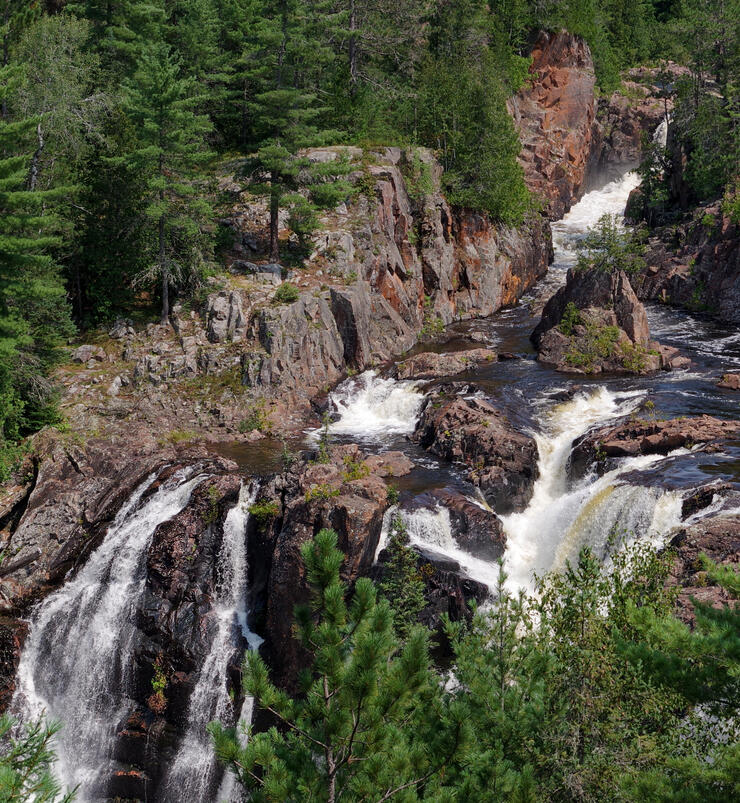
There is a lot to see in Northern Ontario. Don't do what many people do and just blow through. Are you planning a side trip to Manitoulin Island? That's worth a day or three. Are you planning to visit Ouimet Canyon? Many people I've spoken with have ridden past it, not knowing it is a must-see sight only 14 kilometres off the Trans-Canada (Highway 17). Make sure you do research plan ahead so you don't miss what Northern Ontario has to offer. Don't just ride, go waterfall hunting. Go see Kakabeka Falls, Chigamiwinigum Falls, Aubrey Falls, and Aguasabon Falls. Check out the Eagle Canyon and White River Suspension Bridges. Camp in our provincial parks like the Lake Superior Provincial Park or Sleeping Giant Provincial Park. Discover Northern Ontario's great hiking. Take a day and go fishing or swimming. Visit Silver Islet. See Canadian and Indigenous art in museums in Sudbury, Sault Ste. Marie or Thunder Bay.
And, while you’re riding in Northern Ontario, ride safe, bring the right gear, and be prepared for whatever comes your way. Remember, no plan survives first contact with the enemy. The enemy can be unwelcome things like bad weather or breakdowns. It can also be serendipitous things like meeting new friends and getting an invite to dinner. Yes, the people are that nice in Northern Ontario. So relax, join the slower pace that Northern Ontario is known for, and go where your travels take you. What can we say, go slower, stop more often, and see more. You’ll be glad you did.
Disclaimer: Riders are responsible for their own safety. Always obey traffic laws and follow the speed limit. In an emergency, call 911.
Recommended Articles

Bucket List Motorcycling in Ontario, Canada 2026

Ontario's Best Twisties: Five Roads to Get Your Lean On

The Big Belly Tour—A Complete List of Ontario's BBQ Joints
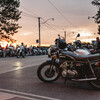
It's Bike Night in Ontario 2024

Ontario's Top Twisties

Have You Ridden Canada's OG Highway? Here's Why Every Rider Needs to Hit Up Historic Highway 2
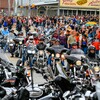
23 Amazing Photos That Prove PD13 Is Still The Best Motorcycle Event Ever

Motorcycle Swap Meets in Ontario—The Complete List for 2025

And a Vespa shall lead them all...


